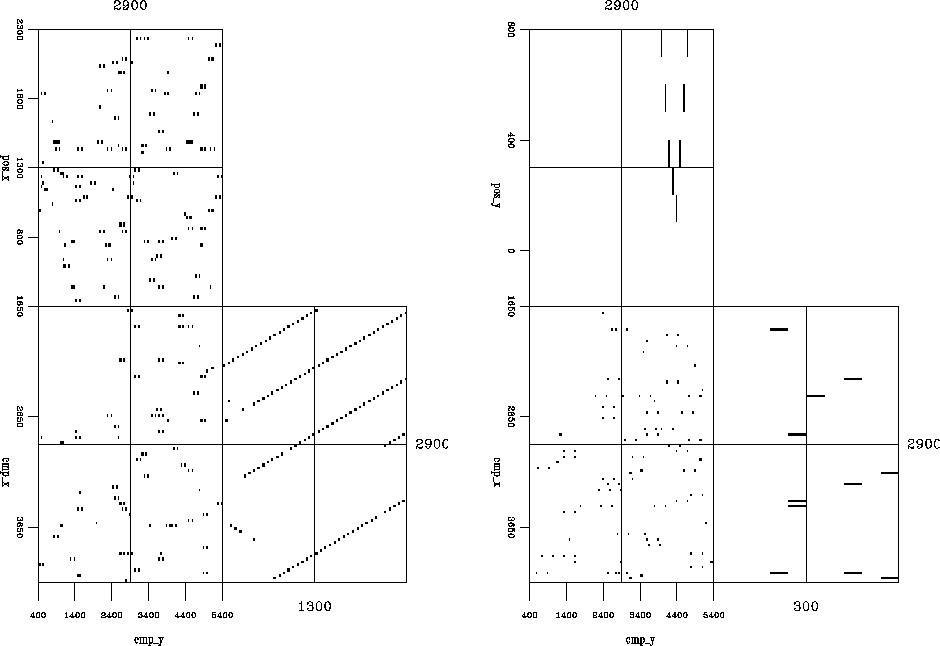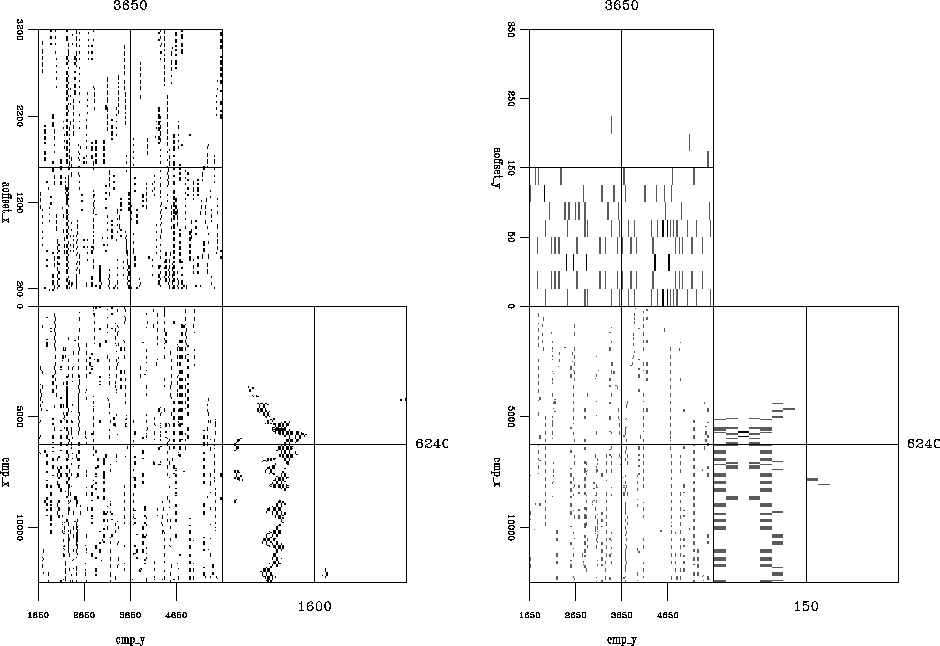




Next: Data size
Up: COMPLICATIONS
Previous: Approximate inverses
A 3-D reflection dataset resides in a five dimensional space. Typically
we describe this space in terms of ( ) or (
) or ( ) where
t is time and
) where
t is time and  are the source, receiver, midpoint, and
offset vectors.
In Biondi and Vlad (2001) the dimensionality of the dataset was
decreased by one by describing offset by a scalar rather than a vector.
This is far from an ideal solution, especially in the case of a land dataset
and/or data over complicated geology. In both cases the earth being
sampled at different azimuths can vary significantly.
By stacking we are making an implicit assumption that there isn't any variation (or
at least significant variation) due to azimuth. This can affect both
our amplitudes and our ability to accurately estimate the model velocity Clapp and Biondi (1995).
are the source, receiver, midpoint, and
offset vectors.
In Biondi and Vlad (2001) the dimensionality of the dataset was
decreased by one by describing offset by a scalar rather than a vector.
This is far from an ideal solution, especially in the case of a land dataset
and/or data over complicated geology. In both cases the earth being
sampled at different azimuths can vary significantly.
By stacking we are making an implicit assumption that there isn't any variation (or
at least significant variation) due to azimuth. This can affect both
our amplitudes and our ability to accurately estimate the model velocity Clapp and Biondi (1995).
If we use a five dimensional model space we must modify our estimation procedure.
The solution is to perform individual estimations at
different hy or azimuths. Solving independent problems is not generally a workable
solution. First we aren't imposing any smoothness over hy or azimuth, something
that we know should physically exist. Our estimation procedure is likely to produce
an answer far from smooth over the added axes. Figure ![[*]](http://sepwww.stanford.edu/latex2html/cross_ref_motif.gif) and Figure
and Figure ![[*]](http://sepwww.stanford.edu/latex2html/cross_ref_motif.gif) show fold maps for a portion of a 3-D land and marine
datasets. The left panel shows the cmpx,cmpy,hx cube, the latter the
cmpx,cmpy,hy cube at the same midpoint location. Note how in both cases the coverage
varies significantly as a function of hy. Take the marine case for example.
Standard acquisitions techniques would lead to cmpy (cross-line direction) locations to be banded along different
hy locations (caused by the multiple towed cables) and few large hx at small hy
(due to cable feathering).
show fold maps for a portion of a 3-D land and marine
datasets. The left panel shows the cmpx,cmpy,hx cube, the latter the
cmpx,cmpy,hy cube at the same midpoint location. Note how in both cases the coverage
varies significantly as a function of hy. Take the marine case for example.
Standard acquisitions techniques would lead to cmpy (cross-line direction) locations to be banded along different
hy locations (caused by the multiple towed cables) and few large hx at small hy
(due to cable feathering).
fold.land
Figure 5 The fold from a portion of a 3-D land dataset.
The left panel is a subset at a constant hy. Three
panels from the subset are shown. The right panel is a subset at a constant hx.
Both panels show the same cmpx ,cmpy location.
![[*]](http://sepwww.stanford.edu/latex2html/movie.gif)





fold.elf
Figure 6 The fold from a portion of a 3-D marine dataset.
The left panel is a subset at a constant hy. Three
panels from the subset are shown. The right panel is a subset at a constant hx.
Both panels show the same cmpx ,cmpy locations.
![[*]](http://sepwww.stanford.edu/latex2html/movie.gif)










Next: Data size
Up: COMPLICATIONS
Previous: Approximate inverses
Stanford Exploration Project
10/14/2003
![[*]](http://sepwww.stanford.edu/latex2html/cross_ref_motif.gif) and Figure
and Figure ![[*]](http://sepwww.stanford.edu/latex2html/cross_ref_motif.gif) show fold maps for a portion of a 3-D land and marine
datasets. The left panel shows the cmpx,cmpy,hx cube, the latter the
cmpx,cmpy,hy cube at the same midpoint location. Note how in both cases the coverage
varies significantly as a function of hy. Take the marine case for example.
Standard acquisitions techniques would lead to cmpy (cross-line direction) locations to be banded along different
hy locations (caused by the multiple towed cables) and few large hx at small hy
(due to cable feathering).
show fold maps for a portion of a 3-D land and marine
datasets. The left panel shows the cmpx,cmpy,hx cube, the latter the
cmpx,cmpy,hy cube at the same midpoint location. Note how in both cases the coverage
varies significantly as a function of hy. Take the marine case for example.
Standard acquisitions techniques would lead to cmpy (cross-line direction) locations to be banded along different
hy locations (caused by the multiple towed cables) and few large hx at small hy
(due to cable feathering).

![[*]](http://sepwww.stanford.edu/latex2html/movie.gif)
